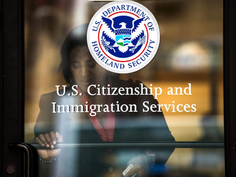Will the Outcome of the U.S. Midterm Elections Impact Stock Market and Dollar Strength?
- Oluchi Nora

- Nov 9, 2024
- 3 min read
Eneh Oluchi Nora, Jadetimes Staff
E.O. Nora is a Jadetimes news reporter covering Political news

Meanwhile, while Americans have casted their vote, U.S. stock markets are up, but the dollar is exhibiting a little weakness. Stocks head higher in this market action that underscored investor sentiment, as possible political and economic changes come into view with the still undecided U.S. midterm elections, viewed as a milestone event which could define the direction of fiscal policy in the country and, possibly influence what the Federal Reserve does to manage economic problems.

Stock Market Gains Amid Uncertainty
Traditionally, midterm elections buoy markets, often because they bring clarity as to which direction future policies will take. So, as the President has been declared, momentum emerged in the likes of stock indexes such as the S&P 500 and the Nasdaq. According to analysts, this buoyancy reflects optimism rooted in a typical trend: U.S. stock markets have shown to perform during midterm elections due to the fact that they dissipate a level of uncertainty around legislative direction.
What many refer to as the "midterm rally" is one reason for much investor optimism. Indeed, pattern would have it that U.S. stocks generally rise in the months after midterms since the political environment has stabilized. This effect is usually attributed to a market's preference for stability and predictability. If these elections result in a divided government, that might reduce major policy changes, thus appealing to investors who favor status quo governance policies whereby businesses can operate with fewer regulatory shifts.

Pressure on the Dollar
The dollar is under pressure, though, with the stock markets having strengthened to reflect an investor focus on possible future rate policies by the Federal Reserve. One of the biggest challenges to the economy is inflation, and this year the recent Fed rate hikes have driven the dollar higher. In the face of political change and growing debate over the consequences of further hikes, however, there are signs the Fed may take a more measured approach.
A divided Congress could reduce the chances of radical fiscal policies, such as aggressive stimulus spending, that could lead to additional rate hikes. Less-aggressive increases would harm the dollar, since other currencies would be able to offer relatively more attractive yields. Consequently, a small weakening of the dollar may mean that investors expect less rate rises in the next months.
Election Outcomes and Market Expectations
What the final makeup of Congress is will be important for the forecasting of the market's trajectory in the months ahead. A split Congress-with different parties in charge of the House and Senate-simply means there would be a reduced probability of sweeping changes to fiscal policies, which could help keep stock market gains by continuing the current economic landscape.
The investors will be keenly watching for any signals of policy shifts on pertinent issues such as taxation, healthcare, and energy, as these factors could affect respective sectors. For instance, a Congress keen to eliminate regulatory barriers for energy firms may boost the fortunes of oil and gas stocks, while an environmentally friendly approach toward energy policies might place renewable companies in good stead.
Outlook
It is going to be an interesting few days for the markets as investors digest the final election results and interpret what they might mean for policy direction. For now, movements seem positive, but there are many uncertainties yet to be seen. The next steps of the Federal Reserve in response to both the economy and the election outcomes will certainly be of interest.
For now, markets are clearly entering into a transition period-balancing in a delicate tightrope act between political changes and economic pressures, responses to an evolving policy landscape. Whether these stock market gains can be sustained depends widely on the post-election approach of lawmakers and the Fed's strategy in the months to come.











































Comments